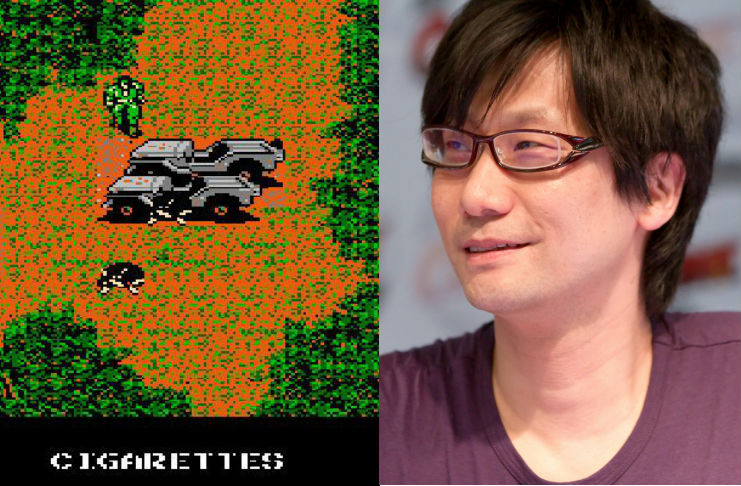In 1987, a game called Metal Gear was released for the MSX2 computer. The first game designed by Hideo Kojima, the game showed that you could make an engaging spy game that revolves around avoiding enemies rather than a run-and-gun style game. Metal Gear would go on to be the prototype for the “stealth” genre of video games.
But the MSX2 was peanuts compared to the larger market that the Nintendo Entertainment System had a stranglehold over. So when Konami decided to make a port of Metal Gear for the NES without Kojima’s involvement, the result was a very…different product. But this port would set into motion a sequence of events that would result in Kojima returning to the franchise years later, and create some of the most memorable video game experiences ever.
The Port To Surpass Metal Gear
The NES port of Metal Gear didn’t have any input from Kojima or the original development team. Instead, it was published by the Ultra Games division of Konami, and Konami had instructed Ultra to make the port “as different as possible” from the MSX2 version.
As a result, there is an extensive outdoor area prior to the first building of the game, as well as various sections of the game that were originally in one building being broken up into seperate buildings. Some bosses have also been changed entirely, such as the Hind D helicopter in the MSX2 version becoming “Twin Shot,” a pair of gun turrets.
Overall, the NES version is very underwhelming compared to the MSX2 version. There are a plethora of translation errors; classics include “I FEEL ASLEEP!” instead of “I FELL ASLEEP!” and who could forget the classic “UH-OH. THE TRUCK HAVE STARTED TO MOVE!” The hardware limitations also had a profound impact on the game; as the NES has a less-extensive color palette, the colors in the game are much duller than the MSX2 version; there is a lot of grey, brown, and green used throughout the various buildings and outdoor settings. Worst of all, instead of actually fighting the Metal Gear at the end of the game, you fight a Supercomputer boss surrounded by soldiers. Yikes.
Some of this can be attributed to the turnaround time; the staff at Ultra Games had to crank out the port in three months. The NES version’s noticeably lower quality and vast differences led to Hideo Kojima disowning the game publicly.
The Sequel That Spawned A Legend
It’s worth noting that the NES version of Metal Gear sold over one million units in North America, making it one of the best-selling titles for the console. Despite the game being drastically different from the acclaimed MSX2 version, there was still enough there to resonate with Western audiences.
Perhaps even more worth noting, however, is that because the NES game sold so well, there were immediate discussions for a sequel. Because the MSX2 was popular in Japan but had no influence in the North American market, even the original Metal Gear for MSX2 wasn’t an immediate shoe-in for a sequel. But over a million units in North America for the quickly thrown together NES version? There must be a demand.
And so Ultra Games began work on Snake’s Revenge, a sequel to Metal Gear directly aimed at the North American and European markets. Released in April 1990, it featured more of the stealth-action genre, as well as some side-scrolling elements. And while the game performed admirably, it’s how Kojima reacted to the game’s creation that would change the video game industry forever.
The Return Of Kojima
When Hideo Kojima heard about Snake’s Revenge being developed, he was determined to make a sequel that was true to his vision, which became Metal Gear 2: Solid Snake.
While the game would still be released for the MSX2 in 1990 (a few months after Snake’s Revenge,) the game continued to expand and revolutionize the stealth genre. More mechanics and tools were added to give the player creativity in how they approached sneaking around enemies, and a greater emphasis on storytelling led to the game discussion heavy themes such as the nature of war. This offered gamers an early glimpse of how video games could serve as a form of artistic expression.
Metal Gear 2: Solid Snake received universal acclaimed when it was released, with many considering it to be one of the greatest 8-bit games ever made. And it only came to be because of an unrelated sequel to a shady port of Kojima’s original classic.
And The Rest Is History
After the success of Metal Gear 2: Solid Snake, Kojima would begin planning Metal Gear Solid, which would go on to be one of the most successful and critically acclaimed games ever made. The success of Metal Gear Solid solidified Hideo Kojima as one of the leading creative forces in video games, and also showed how the Metal Gear franchise was one of the most consistent and innovative game series around. Many Metal Gear titles would go on to win or be nominated for Game of the Year in their respective times.
And none of it would have happened if it weren’t for that rough NES port of Metal Gear! If it hadn’t been made, it wouldn’t have been a smash hit overseas, spawning an unrelated sequel that inspired Kojima to retake his franchise. Even if it was trash, it was trash that ultimately sparked gold.
